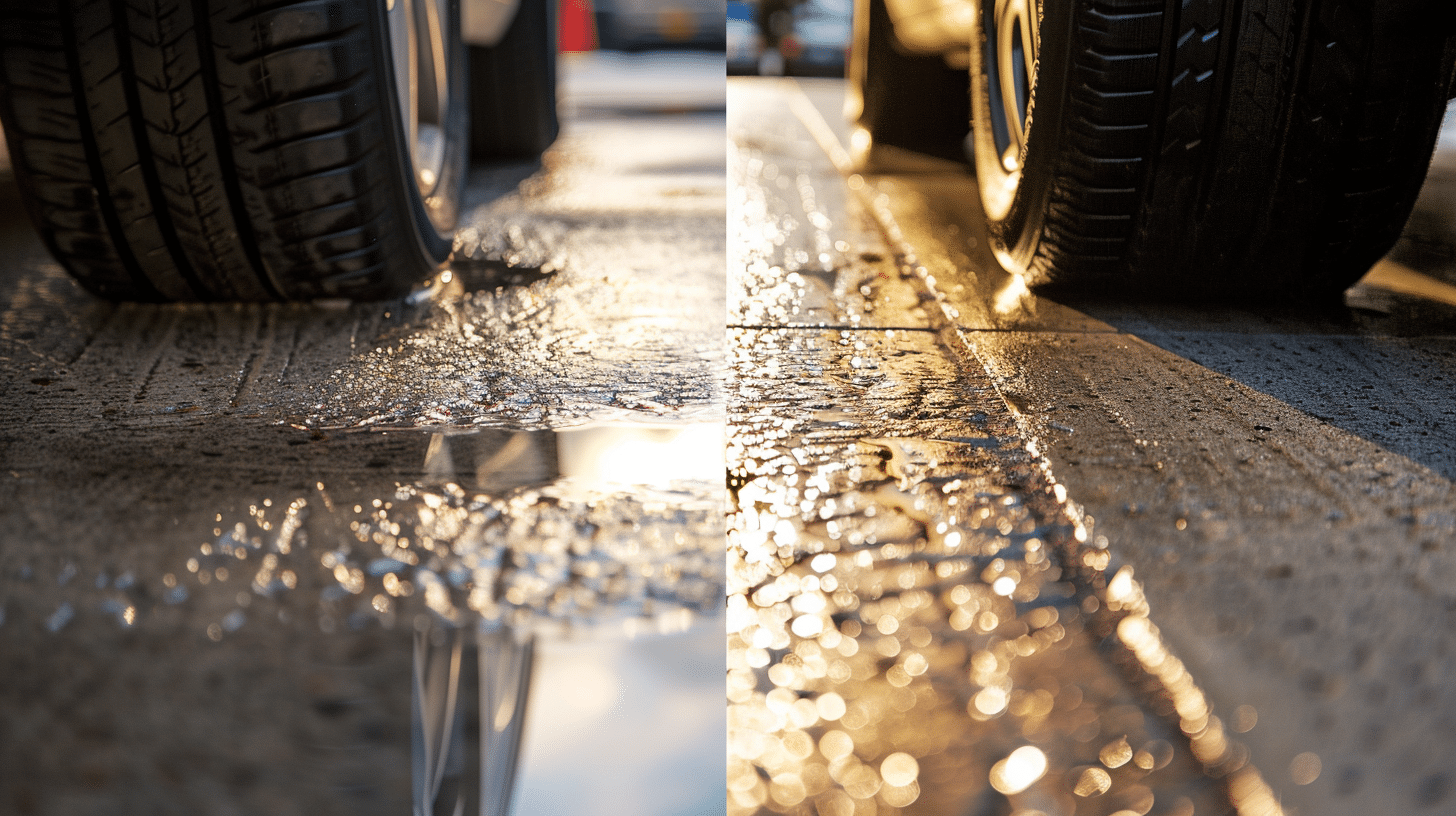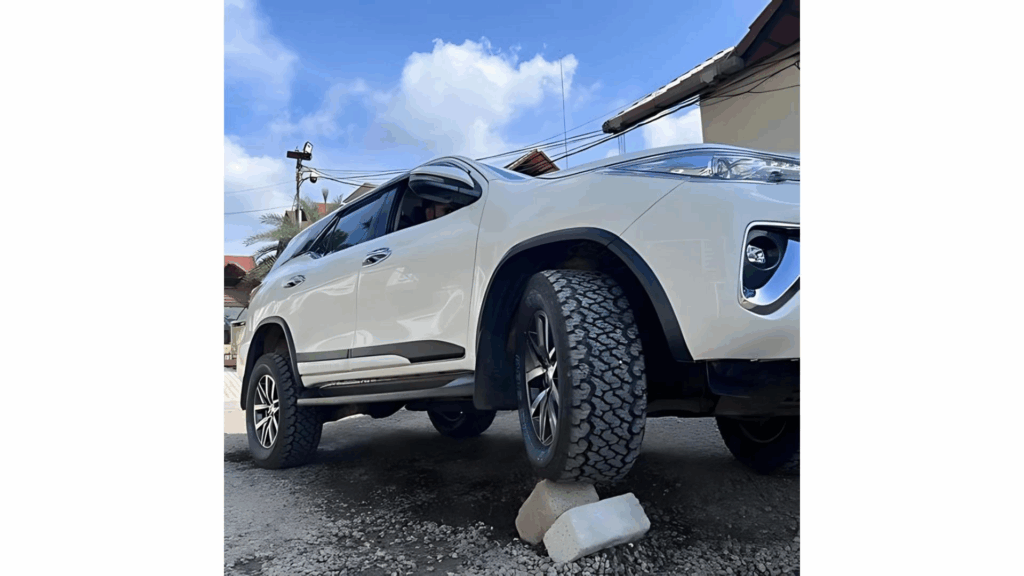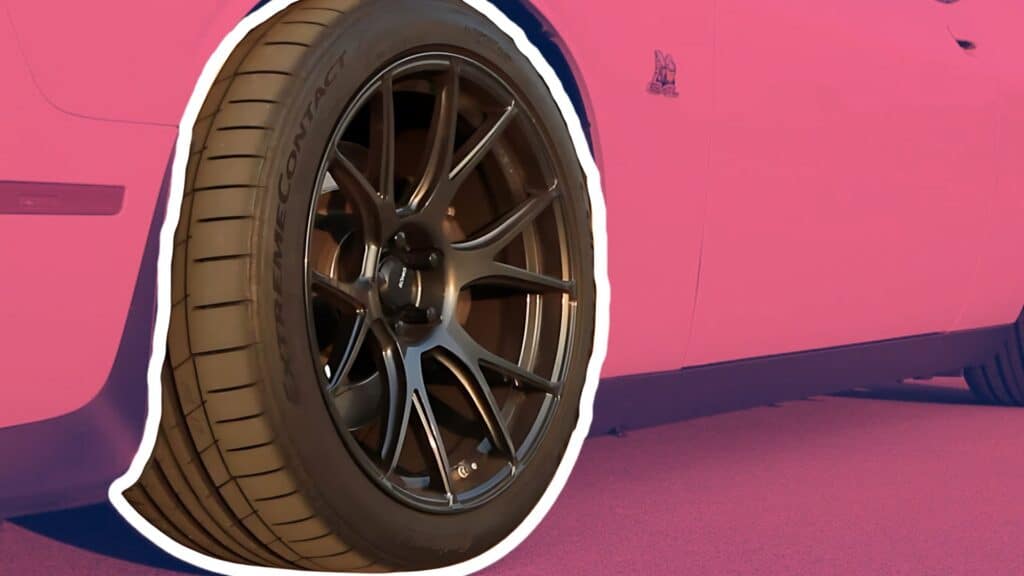Let’s talk tires! I’ve probably seen numbers like “305” on tire sidewalls, but what do they really mean? If you’re in the market for new tires or just curious, you’ve come to the right place.
So, how big is a 305 tire? It’s 305 millimeters around 12 inches across. That’s a pretty wide tire!
This size can affect how your vehicle handles and feels on the road. It’s important for trucks, larger cars, and even some sportier vehicles.
Let’s take a closer look at 305 tires-their size, how they work, and what they could do for your ride.
Interested? I’m excited to get into the details of these wide tires and see what they have to offer!
What is a 305 Tire Size?
Let’s break down what a 305 tire size means. The number “305” tells us how wide the tire is—305 millimeters from one side to the other, or about 12 inches across.
But there’s more to a tire size than just the width. Take a common size like 305/70R18. Here’s what each part means:
- 305: The tire’s width in millimeters
- 70: The tire’s height as a percentage of its width (called the aspect ratio)
- R: Stands for radial construction
- 18: The size of the wheel rim in inches
This system helps us understand the tire’s full size. The height and width affect how the tire looks and works on your vehicle, and the rim size tells us what wheels the tire fits.
Understanding these numbers helps you pick the right tires for your needs.
Key Benefits of 305 Tires

305 tires offer several advantages for your vehicle. Let’s look at why you might choose these wider tires.
- Better Road Grip: The wide design of 305 tires creates a bigger contact area with the road. This means your vehicle can hold onto the road better, whether dry, wet, or muddy.
- Steadier Rides: These tires help your vehicle feel more planted on the road. This is especially helpful when you’re driving fast or on bumpy trails. Your car or truck won’t sway as much in turn.
- Eye-Catching Look: 305 tires give your vehicle a bold appearance. They make your ride look more powerful and ready for action. Many drivers enjoy this sturdier style.
- Carries Heavy Loads: If you use your vehicle for tough jobs like pulling trailers or carrying big loads, 305 tires can help. They’re built to handle more weight, making them great for work trucks and large SUVs.
Potential Drawbacks of 305 Tires

While 305 tires have advantages, they’re not perfect for every situation. Here are some things to consider before getting these wide tires.
- Uses More Fuel: The extra width of 305 tires means they need more energy to roll. This can make your vehicle use more gas than it would with narrower tires.
- Might Not Fit: Not every car or truck can use 305 tires. They’re pretty big, so they might not fit in your wheel wells or could rub against other parts of your vehicle.
- Costs More: Bigger tires often come with a bigger price tag. 305 tires use more material to make, so they usually cost more than smaller sizes.
- Can Be Noisy: These wide tires might make more noise on the road and make your ride feel stiffer, especially on bumpy streets. This might not be ideal if you prefer a quiet, smooth ride.
Think about these points along with the good things about 305 tires. It’s important to weigh both sides to decide if they’re right for your vehicle and driving style.
Applications and Compatibility

305 tires aren’t for every vehicle. Let’s examine where they work best and what to consider when considering them.
1. Which Vehicles Use Them
- Big Trucks: Many pickup trucks can handle these wide tires.
- Large SUVs: Some bigger sport utility vehicles use 305 tires.
- Muscle Cars: Some high-performance cars use these for extra grip.
2. Fitting 305 Tires
- Wheel Size: They usually work best on wheels 10 to 11 inches wide.
- Vehicle Size: Generally, larger vehicles have the space for these tires.
3. Things to Check
- Space in Wheel Wells: Make enough room for the tire to turn without rubbing.
- Suspension: Your vehicle’s suspension setup must work with these wider tires.
- Wheel Position: How far the wheel sticks out (called offset) matters for fit.
- Ground Clearance: Check that the tires won’t scrape on bumps or when turning.
Before buying 305 tires, check your vehicle’s manual or talk to a tire expert. They can help ensure these tires work well with your car.
Performance and Durability

Let’s look at how 305 tires work and how long they last
1. Grip and Control
- Dry Roads: These wide tires hold well on dry roads, helping your vehicle turn and stop better.
- Wet Weather: The big contact area can help move water away, lowering the chance of sliding.
- Snow: While wide, 305 tires might not work best in deep snow. They tend to float on snow instead of cutting through it.
2. Made to Last
- Strong Materials: 305 tires often use tough rubber mixes to handle their size and weight.
- Wear Protection: Many are built to fight getting worn down fast, even with heavy use.
- Heat Handling: The wide design helps spread out heat, which can help the tires last longer.
3. Off-Road Ability
- Loose Ground: On dirt, gravel, or sand, these tires can dig in for better hold.
- Rocky Areas: The wide footprint can help spread the vehicle’s weight on rocky ground.
- Mud Driving: They can often push through mud better than thinner tires.
Remember that how well 305 tires work and how long they last depends on how you use them and care for them.
Regular checks and the right tire pressure are key to getting the most out of these big tires.
Alternatives and Comparison
When considering 305 tires, it’s helpful to look at similar sizes. Let’s compare 305 tires with their neighbors: 275 and 315.
| Feature | 275 Tires | 305 Tires | 315 Tires |
|---|---|---|---|
| Width | Narrower (275 mm) | Medium (305 mm) | Widest (315 mm) |
| Fitment | Better fit for smaller vehicles | Good fit for many trucks and large SUVs | Best for very large vehicles |
| Cost | Generally lower | Mid-range | Often the highest |
| Fuel Economy | Possibly better due to narrower width | Moderate | Lower due to increased rolling resistance |
| Grip | Good grip, less than 305 or 315 | Strong road grip | Maximum road contact and grip |
| Appearance | Subtle | Bold look | Powerful, aggressive look |
| Best Suited For | Smaller vehicles, budget-conscious buyers | Trucks, large SUVs, a balance between width and practicality | Very large vehicles, performance enthusiasts |
Choosing the right size depends on your needs. If you want better gas mileage and a lower price, I might suggest going with 275s.
If you’re looking for the widest grip and boldest look, 315 tires could be the way to go. 305 tires offer a good middle ground-great grip and style without going to extremes.
Think about your vehicle type, how you drive, and your budget. A big truck for heavy loads might benefit from 315s, while a smaller SUV might do well with 275s.
I think 305s are perfect for those wanting extra width without going all out.
Remember, the best choice balances your vehicle’s needs, your driving style, and what you’re willing to spend. I’d recommend talking to a tire expert to find the perfect fit for your situation.
Summing It Up
I’ve covered a lot of ground in our look at 305 tires.
From understanding the size- a whopping 12 inches wide-to exploring its pros and cons, you’re now better equipped to decide whether these tires are right for your ride.
Remember, 305 tires offer great grip and a bold look, but they’re not for every vehicle or driver.
Consider your needs, vehicle specs, and driving habits before making a change.
Whether you choose 305s or another size, the key is finding the right balance of performance, cost, and fit for your situation.
Still wondering about tire sizes? Don’t hesitate to ask a tire pro. They can help you find the perfect fit for your vehicle and driving style.
Frequently Asked Questions (FAQs)
What Tire Size Is 305 Equal To?
A 305 tire is about 12 inches wide. It’s not equivalent to any standard inch-based tire size, as 305 refers to the width in millimeters.
What Size Is 305 in Inches?
305 millimeters is equal to about 12 inches. This measurement refers to the width of the tire from sidewall to sidewall.
What Tire Is Bigger, 305 or 33?
It depends on what you’re measuring. A 305 tire is about 12 inches wide, while a 33-inch tire refers to the overall diameter. They measure different things, so it’s not a direct comparison.
How Much Wider Is a 305 than A 275 Tire?
A 305 tire is 30 millimeters (about 1.18 inches) wider than a 275 tire. The 305 is 12 inches wide, while the 275 is about 10.8 inches wide.


